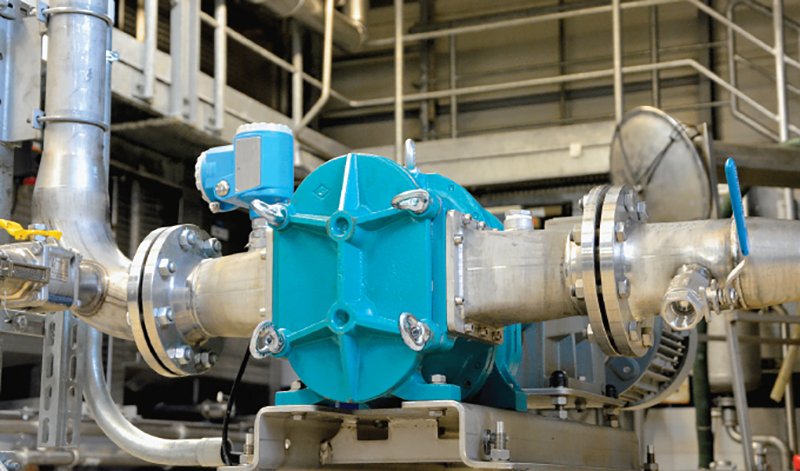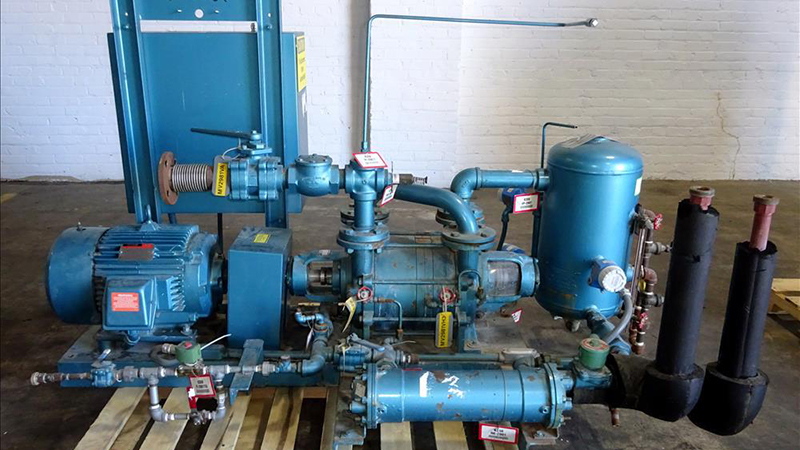Using the right industrial pump in the appropriate location can substantially impact the productivity and quality of the pulp and paper industry. With various pump options available, it can take time to identify the most suitable one for your needs. However, selecting the best pump for your application can enhance the efficiency and durability of your pump and system. Below guidelines will help you in selecting the appropriate pump.
Centrifugal Pump
Centrifugal pumps convey low-viscosity fluids such as solvents, chemicals, oils, acids, and bases. These pumps feature a design that makes them suitable for almost any application that requires such fluids to be transported. They use the rotational energy from one or more impellers, powered rotors, to push the fluid.
The fluid enters a revolving impeller along an axis and is thrown out along the impeller’s edge tips by centrifugal force. The impeller’s speed increases the velocity and pressure of the fluid, directing it toward the pump exit. This makes centrifugal pumps an efficient and effective choice for various fluid transport applications.
Industrial centrifugal pump casings are divided into two categories: diffuser and volute. The primary objective of both systems is to convert the motion of the fluid into a regulated outflow at pressure.
Features:
- Since it has a modular layout, it is very convenient to customize it to meet particular requirements
- Centrifugal Pumps have a greater efficiency point than manually powered pumps
- Centrifugal Pumps are available in many various forms and sizes

Rotatory Lobe Pump
Positive displacement pumps, also known as rotary lobe pumps, are highly versatile and adaptable equipment. The main use of these pumps is in industries such as chemical manufacturing and environmental technology. They are employed to move a wide range of materials smoothly and uninterruptedly while also accurately measuring the amount based on how fast they rotate.
One of the most significant advantages of these pumps is their ability to operate with a small footprint and high power density. The fluid flow inside the casing is regulated by the lobes, which do not come into contact with the pumped liquid.
This allows the pump shaft support bearings to be located in the gearbox, minimizing pressure since the bearings are not in contact with the fluid being pumped. The shaft deflection also reduces pump noise levels, making these pumps ideal for quiet applications.
Features:
- Self-priming
- Dry running tolerance
- Transporting fluids that have either low or high thickness
- Channel for large ball
- Space saver efficient, yet highly effective structure

Chemical Process Pumps
Chemical process pumps are widely used in various applications due to their dependability and low running costs. These pumps are commonly found in chemical, petrochemical, and inorganic and organic manufacturing industries, where they handle aggressive goods and acids. Standard chemical process pumps typically have a maximum speed of 360 rpm and can operate within a temperature range of up to 350°C. In addition, they feature a modular design with a fully open impeller, which minimizes axial thrust, and a rear pullout construction that simplifies maintenance.
Features:
- Vertebral pullout model
- Constant flow
- Highly efficient
- Robust structure
- Lower NPSH
- Requires low maintenance cost
- Ecological friendly
- Shaft Refraction less than 0.05mm
- Conservation or heating of casing cover is probable
Fan Pump
A fan pump propels a diluted slurry of papermaking supplies to move the paper machine’s headbox to prevent “barring” and maintain basic weight over time. These pumps are designed with reduced pulsation in mind.
Papermakers may add chemicals such as fillers, acid, or base before the fan pump to optimize the blending motion. Fan pumps are usually positioned beneath the paper machine’s forming area.
Features:
- Axial splitting, one or two steps
- Rotating staggered vane impeller with double suction
- Outstanding efficiency and vibration-free dependability
- Motorised & gland-packed seal

Liquid Ring Vacuum Pumps
Vacuum dehydration is crucial in various pulp and paper production stages, including the vacuum suction tank of the mesh component, the vacuum suction roll, and the vacuum holding component for the upper and lower wet pulp. The liquid ring vacuum pump is widely used for vacuum dehydrating papermaking pulp. Therefore, selecting a pump that can meet the production process’s technological requirements is important.
Slurry Pump
A slurry pump is an instrument used for pumping liquid containing solid particles. Different material concentrations, sizes, weights, shapes, and chemical compositions require various slurry pumps with different designs and constructions. Due to the addition of abrasive material, a slurry pump is more durable than a liquid pump and has replacement components to withstand wear. The most commonly used overhung impeller can be found in horizontal, vertically suspended, and submersible centrifugal slurry pumps, which have bearings supported shafts, split casings, and metal or rubber linings.
Process Pump
Process pumps are essential for fluid transportation in industrial processes. They can be categorized into two main types: Process Pumps are centrifugal pumps widely used in oil refineries. At the same time, ANSI Process Pumps are end-suction centrifugal pumps commonly used in the chemical industry and other industrial applications.
Features:
- Construction with an open impeller
- Top middle line discharge, end suction
- Hydraulic seal and gland packing
- Easy axial exterior modification for impeller wear
Conclusion:
Choosing the right pump is important for achieving optimal performance and efficiency in pulp and paper applications. Understanding the types of pumps to factors such as flow rate, viscosity, and head pressure is vital. With this guide and information provided, pulp and paper manufacturers can make informed decisions about their pump selection, leading to better results and higher productivity.


